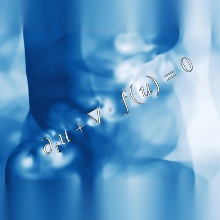Directly to
Team
Principal Investigators:
- Manuel Torrilhon,
Applied and Computational Mathematics, RWTH Aachen, Germany - Hossein Gorji,
Laboratory for Multiscale Studies in Building Physics, EMPA, Switzerland
Project staff:
- Lukas Netterdon (RWTH Aachen)
- Veronica Montanaro (EMPA)
group's website:
https://www.acom.rwth-aachen.de/
Abstract
Gas flows in small scale devises or rarefied conditions may depart significantly from thermal equilibrium, and thus the conventional Navier-Stokes-Fourier model of fluid dynamics fail to describe them properly. The Boltzmann equation on the other hand, gives the appropriate starting point for studying gas flows at such scenarios by providing a statistical account of molecular interactions. However, due to the complexity of the Boltzmann collision operator and high dimensionality of its solution domain, alternative reduced models and computational methods are desirable. Besides a computationally expensive direct discretization of a Boltzmann-type equations, moment equations devise partial differential equations by a model reduction procedure such that fluid dynamic models can be extended into non-equilibrium. On the other hand, in particle Monte-Carlo methods (DSMC) the flow field is described by a computational particles ensemble representing the distribution function. These methods are widely used and offer high physical accuracy, but at possibly significant computational cost especially at low speed and near-equilibirum flows.
The stiffness of the Boltzmann collision operator which results in massive computational costs in the near-equilibrium regimes, can be treated by passing to the diffusion limit of the Boltzmann equation. In this context, the Fokker-Planck (FP) equation naturally arises as a diffusion approximation. The FP operator can be regarded as an approximation of the Botlzmann operator, where the effect of binary collisions is described by a drift-diffusion mechanism. In other words, the net force acting on a particle due to successive collisions is decomposed into a part which is correlated to the particles velocity (drift) and the remainder which is a purely random contribution (diffusion):
Matching evolution of different moments of the Boltzmann equation with those arising from the FP model, leads to closure equations for drift and diffusion coefficients. Ultimately, the FP equation is solved efficiently by implementing the underlying Langevin-type stochastic differential equations for a particle ensemble.
In this project we will view the FP approach as model cascade in which a hierarchy of operators allows to approximate the Boltzmann equation to ever higher degree. The approach will be applied to the polyatomic Boltzmann collision operator, which requires an enlarged phase space. Higher order and entropy-stable implementations of the stochastic differential equations will be
investigated.


